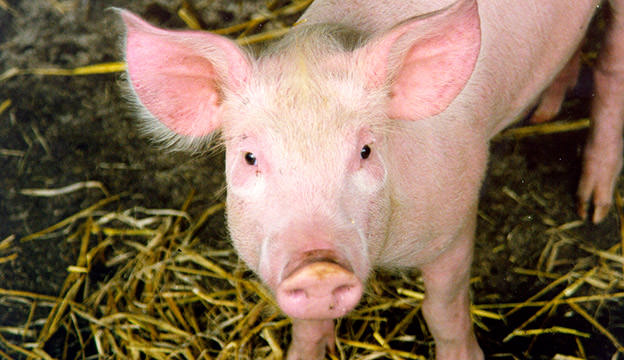
When managed properly, pigs are hardy, healthy animals. Here are some other things you might not have write about the swine living on your farm.
Myth
Baby pigs are hard to raise.
Fact
If pigs are raised in a stress-free environment with adequate, healthy food and they receive high-quality colostrum from their mothers at birth, they are less susceptible to illness and have stronger immune systems, making them easier to raise.
Myth
All pigs grow at the same rate.
Fact
Pigs with diseased or challenged immune systems will often reach market weight 14 to 30 days later than herd mates. Different pig breeds have different rates of maturity.
Fact
An ounce of prevention is worth a pound of cure in preventing swine diseases.
Fact
Good, clean drinking water is very important for keeping a pig healthy. It keeps body functions operating smoothly and helps rid the pig’s body of waste.
Fact
Pig barns should have proper ventilation to help prevent respiratory disease.
Myth
Pigs are dirty.
Fact
Pigs are actually one of the cleanest farm animals if given adequate space. They will sleep in one area and defecate in another. It’s only when temperatures get too warm that they try to cool off by selecting a wet, muddy spot to lay in.
Myth
Pigs are prone to disease.
Fact
Pigs can catch diseases carried onto the farm by people, feed trucks, dogs, cats, rats, etc. Viruses specifically can be transported onto the farm by outside sources. We typically buy pigs with disease unintentionally and bring them home; they then transmit the disease to other pigs in the herd. Some producers depopulate their herd and start over with clean, healthy breeding stock and establish a herd health plan to stay free of disease.
Fact
Slaughter checks on your pigs (done by your veterinarian) at a packing plant can reveal many things about the health of your pig herd. The purpose of a slaughter check is to look for abnormal tissue so specific disease problems can be identified and addressed. Respiratory diseases, Atrophic Rhinitis, parasites, reproductive problems, abscesses, Tuberculosis, mange and Erysipelas can all be identified during slaughter checks.
The Small Farm-Rare Breed Connection
The modern small-farm swine producer is most apt to be working with a small number of breeding females, typically just three to 10. They are producing niche markets into which they direct market their product, often just one animal at a time. A small, purebred herd gives the greatest number of marketing options from breeding stock to specialty meat animals for markets as diverse as pig roasts to the fast-growing ethnic markets. Currently, the Duroc, Tamworth, Berkshire and Chester White breeds are sought after for their exceptional taste and other table qualities, such as texture and fat content.
An excellent way to diversify a modern small farm, give it more environmental integrity and to better manage risk would be to build toward a small, tight herd of three to five sows and a boar of a great heritage breed, such as the Hereford or the Black Poland. Such a herd will not bring imbalance to even the smallest of farms, but will make it possible to fit these modest numbers in and around other livestock and cropping ventures, while giving fuller employment to family members—not to mention the personal satisfaction of helping preserve such historically important creatures. At this level, hogs will fit small farms all across the nation! —Kelly Klober
This article contains excerpts from “Safeguard Your Swine” by Dr. Haven Hendricks, PhD, and “Popping Pigs” by Kelly Klober. They appear in Popular Farming Series: Pigs.




